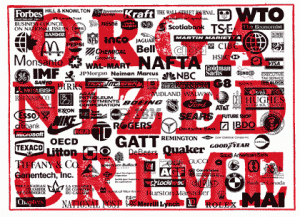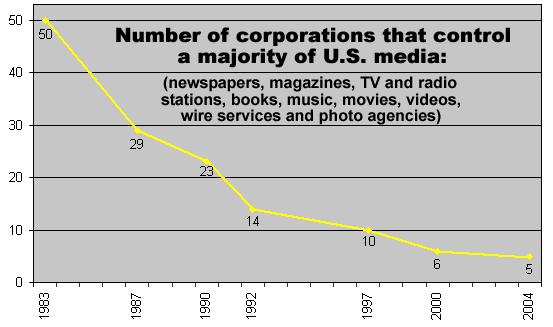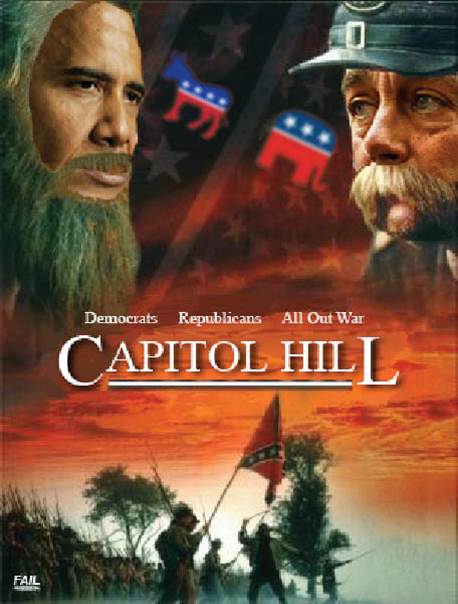Public versus Critical Pedagogies - Literacy's "Doubling" Empowerment
theory/part_one
Literacy and pedagogy scholars influenced by Freire have developed a number of divergent but complementary theories to address the problem of how to enact pedagogies . . .
Culture Jamming as a Critical Public Pedagogy
theory/part_two
Despite the conflict between public and critical pedagogies, there is some promise of resolution. The practice of culture jamming offers such a resolution because of its liminal . . .
Public versus Critical Pedagogies - Literacy's "Doubling" Empowerment
culturejamming/theory/part_one
Literacy and pedagogy scholars influenced by Freire have developed a number of divergent but complementary theories to address the problem of how to enact pedagogies of liberation, theories which can best be described by the interrelated concepts of "critical literacy" (Giroux, 1988), "multiliteracies" (New London Group, 1996), and "intermediality" (Watts-Pailliotet et al, 2000). These concepts can be profitably united under the umbrella of "critical media pedagogy" (Kellner, 2000), which recognizes and offers a response to the public pedagogy promulgated by the mass media (Giroux, 2003 and Szeman 2002). If critical media pedagogy seeks to reveal the underlying ideologies of public pedagogies and envision literacy as an empowering force providing individuals and societies the means to create a more just, egalitarian, and democratic world (Kellner, 2000, p. 200), then from this perspective, critical pedagogy arises as a means to counter cultural hegemony in public pedagogies. The two, critical and public pedagogies, stand in opposition.
To understand how elite interests maintain hegemony, what must first be appreciated is the role of the media as a purveyor of public pedagogy. Kellner (2000) wrote: "The media are an important form of socialization and pedagogy that teach proper and improper behavior, gender roles, values, and knowledge of the world. One is often not aware that one is being educated and constructed by media culture; thus its pedagogy is often invisible and subliminal" (p. 200).
Because of the "invisible and subliminal" nature of public pedagogy, the media are engaged in an insidious educative practice that instructs children and adults in the dominant ideologies, that is, ideas about how to see the world, its inhabitants, and our places within it. This education is so insidious precisely because it masquerades as mere entertainment or transmission of information and thus achieves a powerful persuasive agency. The media, in this view, are not trying to teach us things; they are only mirroring the world as it is.
Coming from a perspective that reality is socially constructed and mediated by language, we know that nothing could be further from the truth (Berlin, 1988). "The world as it is" is itself a social construction that represents and furthers the interests of the elite. Kellner is not the only figure noting the educative function of the media. In Giroux's later work he writes of how "learning takes place in a variety of public spheres outside of the schools" (2003, p. 13) and identifies the media as a key site for this learning.
As another example, Imre Szeman (2002) in his examination of how the media constructs the narrative of gloablization, explained: "the triumphalist rhetoric of politicians and business leaders, the lessons proffered by newspaper columnists and TV news anchors, as well as the fast-cutting globe-hopping ads of dotcoms, financial services companies, and hardware giants - all . . . constitute a form of public education (p. 4). It is precisely this hegemonic construction of reality that Kellner warns against, and which provides the motivation for a countermovement requiring "critical approaches that make us aware of how media construct meanings, influence and educate audiences, and impose their messages and values" (Kellner, 2000, p. 200). If citizens can use critical faculties to become aware of how meaning is constructed in the media, the invisible made visible and the subliminal made conscious, the ideology is robbed of much of its persuasive force for it can no longer be seen as mere entertainment depicting "the world as it is", and instead can only be seen as serving some interests at the expense of others. The question that remains, then, is whose interests are being served? To answer this question, we must look at the corporate structure of media conglomerates and to the work of mass media scholars.
Since the late nineties when conglomeration accelerated, many have worked to raise awareness about the increasing domination of the global commercial media system by western transnational corporations. According to the Free Press, today, the US system is overwhelming dominated by only five massive, vertically-integrated firms: General Electric, TimeWarner, Disney, Viacomm, and Rupert Murdoch's News Corporation. Keeping track of all of these conglomerates' holdings is a huge task, but just one company, TimeWarner alone, owns fourteen major music labels, including Columbia House, Time Life Music, and Warner Bros. Records, to name just a few; fifteen major TV networks including HBO, CNN, TNT, TBS, Comedy Central, Cinemax, and many others; seven major book publishers including Time Life Books and Little, Brown & Co.; over twenty-two major magazines like Time, Life, Fortune, Sports Illustrated, Money, People, and DC Comics; four major film studios including Warner Brothers Studios, Castle Rock Entertainment, and New Line Cinema; eight major internet companies like America Online (AOL), CompuServe, and MapQuest; even non-media interests like the Atlanta Braves and World Championship Wrestling (Frontline, 2003).
Such massive media holdings call into question the whole idea of free market economies and even democracy itself. The economic advantage leveraged by these conglomerates prompted Robert McChesney (1997), a prominent scholar of mass media communications, to write, "Firms that do not have conglomerated media holdings simply cannot compete in this market" (p. 1). The reasons for this are because a single product, like a film, can generate a number of spin-off products like theme park rides, TV shows, soundtracks, videogames, books, and more (McChesney, 1997, p. 1), which multiply profits, and because advertising across media is streamlined, so that the trailer for the film can be shown on cable and network TV channels, on the internet, in newspapers, and in magazines all owned by the parent company. But the effects of these advantages are more insidious than simple profiteering, and McChesney goes on to argue that the system: "works to advance the cause of the global market and promote commercial values, while denigrating journalism and culture not conducive to the immediate bottom line or long-run corporate interests. It is a disaster for anything but the most superficial notion of democracy—a democracy where, to paraphrase John Jay's maxim, those who own the world ought to govern it" (p. 1). Thus the question of whose interests are served by the public pedagogy promulgated by the media is answered quite simply: public pedagogies serve the stockholders' interests, not necessarily the people's.
To counter this, the coincident and complementary projects of radical democracy and critical literacy have arisen. According to Henry Giroux, literacy is the necessary precondition for self and social empowerment. But, we must be mindful of his distinction between literacy as a precondition of, and literacy as a synonym for, liberation, and we must not assume that mere acquisition of literacy is ever enough. "To be literate," Giroux (1988) wrote, "is not to be free. It is to be present and active in the struggle for reclaiming one's voice, history, and future . . . literacy neither automatically reveals nor guarantees social, political, and economic freedom (p. 65, emphasis in the original). Here, Giroux refers to the inescapable fact that literacy is just as often used as a tool of oppression rather than as a means to freedom. While literacy does not guarantee freedom, freedom will not be had without it.
So, as a precondition, literacy can provide the means necessary for a citizenry to apprehend and critique the hegemonic interests that perpetuate oppression, silence, and human suffering. "It provides tools," Kellner wrote "so that individuals can dissect the instruments of cultural domination, transform themselves from objects to subjects, from passive to active" (2000, p. 198). It is in precisely this transformation from object to subject that literacy enacts its empowering capabilities. Objects are without power, to be moved at the will of others, while subjects themselves move, do, and act as agents in their own right. This is not to say subjects are sovereign in their action, merely that, in Giroux's terms, they are active in the struggle for self-reclamation. Certainly they are constrained, but it is these constraints that become the focus of the subsequent resistance.
Giroux's distinction, however, is actually the result of the dialectical interaction between liberation and oppression: subjecthood enables resistance, but can only be achieved in the process of resistance. From this paradox emerges literacy's "doubly empowering" capability. Kellner writes that critical media pedagogy is "doubling empowering, [both] freeing individuals from media manipulation and domination and [also] enabling self-construction and the creation of more cooperative and democratic social relations and institutions" (201). Not only, then, does the acquisition of these literacies allow citizens to see the constructed nature of the worldview presented by the media, it also gives the tools necessary to craft an alternative view of the self and the world, which can create the conditions for a more democratic society. This "doubling empowering" capability not only criticizes hegemonic domination, it also presents a useful and productive alternative. In fact, as will be seen with culture jamming, its very efficacy depends on this doubling empowerment, because, on its own, neither of the functions is sufficient. Mere critique on the one hand or identity construction on the other do not provide potent enough countermeasures because the former is locked into a tug-of-war with that it seeks to criticize and the latter has no basis for identity construction as a form of resistance. Together, however, critique and alternative can provide a powerful form of resistance indeed.
Culture Jamming as a Critical Public Pedagogy
culturejamming/theory/part_two
Despite the conflict between public and critical pedagogies, there is some promise of resolution. The practice of culture jamming offers such a resolution because of its liminal position between the two opposing pedagogies: it is public in the sense it masquerades as legitimate media and propagates along channels similar (sometimes identical) to those used by corporate media, but it is profoundly critical in the way it seeks to reveal the constructed nature of ideology. Whether public or critical, its goal is fundamentally pedagogical because it operates by teaching its audience, fostering awareness, and, in the best instances, offering productive alternatives. Although culture jamming unifies public and critical pedagogies, the unification is far from pacific or harmonious, and many culture jams are badly flawed by internalized contradictions, pedantic in their slavish devotion to a particular political dogma, or dismissible as adolescent mockery, the product of a sarcastic age. Creating culture jams which avoid these pitfalls and which are both successfully public and successfully critical is no minor feat.
There is surprisingly little scholarship on culture jamming within composition studies, a lack that is all the more apparent because of jamming's historical tradition and its activist orientation. While there are a number of books and articles that discuss culture jamming as a phenomenon, there are few treatments of culture jamming as a practice, especially in composition. Primarily in visual arts, consumer, or media studies, what scholarship there is focuses on the technical aspects of production, not on the political or pedagogical implications (see Darts "Visual Culture Jam: Art, Pedagogy and Creative Resistance" as an example in visual arts to the contrary). One chapter (Webber, 2009) from a composition studies text provides a useful example of a Photoshop assignment and some motivating theoretical concerns, but the chapter fails to tie the practice to critical media pedagogy or the larger projects of multiculturalism and radical democracy. Furthermore, the article fails to distinguish between the different rhetorical foundations of different culture jams. While these issues do fall outside that article's scope, clearly there is a pressing need to situate culture jamming within composition pedagogy in order to take advantage of the unique affordances offered both by the practice itself and by composition studies' central role in the Academy. In the remainder of the paper I will attempt an outline of what this theorization might look like applied to a classroom setting and identify areas where more investigation is needed and where future challenges are likely to arise.
As I mentioned at the outset, a singular definition of culture jamming is problematic because the goals of culture jamming differ widely from each other, encompass a variety of media, and find their expression in diverse activities. Graffiti, for example, can productively be seen as a form of culture jamming, as is, according to Lasn (1999), something as mundane as television channel surfing to avoid mind-numbing advertisements (p. 15), but these are not the kinds of activities I advocate for inclusion in a composition classroom. A definition of culture jamming that includes all the varieties is difficult to formulate, and less than useful for pedagogical purposes. If we take the definition I offered previously, that culture jamming is a practice of social activism that, through appropriation, improvisation, and playful critique, makes visible the ways in which social, cultural, and individual realities are constructed in order that they be subverted to more democratic ends, then two key discussions emerge. These discussions revolve around the different denotations of the word "jamming" and around the rhetorical strategies underlying the jamming activity.
In the first discussion, the term jamming has two alternative denotations. On the one hand, it is used in the sense of radio jamming, that is, as an introduction of noise into a system so that the signal is blocked or disrupted. When used in this way, culture jamming is the introduction of contradictory or subversive messages into the media stream in order for the stream to become disrupted. There is, however, another sense of the word jamming that denotes a musical performance. In this sense "jamming" is a kind of improvisation, an extended back-and-forth between different musicians to create an extemporaneous piece made of spontaneous variation. When used in this way, culture jamming is an improvisational creation based on a dialogic interaction between different artists or creators. When encountering the term "culture jamming" readers should remain aware of both meanings of the word, disruption and improvisation, in order to understand the full range of activities the term may denote.
The second important discussion about culture jamming involves the useful distinction made by Christine Harold in her excellent analysis of the rhetorical efficacy of culture jams. Harold (2004) argued that there are two kinds of culture jamming activities based on very different rhetorical foundations. The first, which she called "mere parody" (p. 190), depends on a rhetoric of negation and fails to provide an alternative vision. Furthermore, it perpetuates the very kind of binary thinking the parody seeks to negate. The second kind uses a more efficacious rhetorical strategy; Harold named it "pranking" (p. 192). Rather than simplistically negating an ideology, pranking works to appropriate the utilized strategies and divert their ends. According to Harold, while parodistic culture jamming "does little to address the rhetoric of contemporary marketing" (p. 190), on the other hand, the "playful . . . strategies of the prankster have much to offer social justice movements" (p. 192). In making this distinction, Harold elevated one rhetorical strategy over another, less effective strategy.
It is crucial, in teaching practices of culture jamming, that we differentiate between the rhetorical moves that underpin the projects and strive to encourage the most effective: those based on play, on appropriation of resources and modes, those that divert rather than those that consist instead of mere negation and only perpetuate the binary thinking they oppose.
These two discussions about denotation and rhetorical foundation inform our larger discussion because, provided we pursue the most effective kinds of jamming (those based on improvisation and those which offer useful alternatives), the jams we produce function as a kind of pedagogy. Like critical pedagogy, culture jams seek to subvert the hegemony of the media's public pedagogy, to reveal the underlying ideologies that inform it, and to empower citizens to subjecthood and to attendant action. The similarities between the methods and goals of culture jamming and those of critical media pedagogy are striking; a definition for one could well serve as a definition for the other. Both function by making the invisible visible and by fostering individual and social agency, and both serve the larger goal of democracy.







